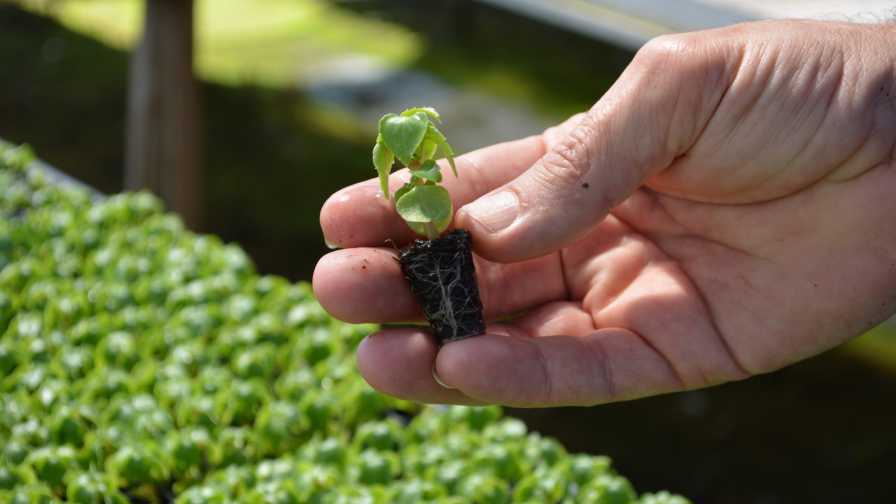Plug and Liner Update: Young Plant Growers Seek Solutions to Shipping, Heating Costs

Many young plant producers deal with issues such as labor and energy costs, yet their focus remains on producing a high-quality end product. Photo: Frank Giles
Growers throughout the industry who want to provide high-quality products to their customers often rely on young plant producers as their primary connection to plant breeders. Because of this, it’s imperative for young plant growers to stay on top of critical issues affecting their businesses.
Greenhouse Grower’s 2019 Plug and Liner Grower Survey illustrates that young plant growers face many challenges. At the same time, they are always looking to improve.
Keep reading for a closer look at some of the steps today’s young plant growers are taking to stay on top of the issues facing them while addressing the needs of their customers. Note: All data from the infographics in this article are from the Greenhouse Grower 2019 Plug and Liner Grower Survey.
Changes in Plug Size
Size demand for plugs depends on the grower and the customer, which can sometimes create a dilemma.
“We are balancing our customers’ desire for 72s versus our company’s typical spacing for 128s,” says Carolyn Suis of Tissue-Grown Corp. in Santa Paula, CA.
Other growers face similar situations, such as Texas-based Magnolia Gardens, which normally grows in 72-count trays but has had requests for larger sizes.
“More of our customers are looking for as many plants per tray as possible,” says Brad Donahue of North Carolina Farms.
2019 Top Young Plant Growers
| 2019 Rank | Young Plant Grower | Units Prepared To Sell In 2019 | 2018 Rank |
|---|---|---|---|
| 1 | Speedling, Inc. | 650 to 700 million | 1 |
| 2 | Tagawa Greenhouses | 367 million | 2 |
| 3 | ArborGen Inc. | 338 million | 3 |
| 4 | Metrolina Greenhouses | 320 million | 4 |
| 5 | Van de Wetering Greenhouses | 275 million* | 5 |
| 6 | Green Circle Growers | 260 million | 6 |
| 7 | Keithly Williams Transplants | 230 million | 15t |
| 8 | Natural Beauty/Floral Plant Growers | 161 million* | 9 |
| 9 | Bob's Market and Greenhouses | 155 million | 11 |
| 10 | Knox Nursery | 150 million* | 12 |
| 11 | Ball Tagawa Growers | 140 million | n/a |
| 12 | Plug Connection | 135 to 140 million | 13 |
| 13 | Aris Horticulture | 120 to 130 million | 14 |
| 14 | Hanor Farms | 100 million* | 15t |
| 15 | Jolly Farmer Products | 90 to 100 million | 17t |
| 16 | Raker-Roberta's Young Plants | 90 to 100 million | 10 |
| 17 | Cal Seedling | 80 to 86 million | 20 |
| 18 | Quik-Starts Plants | 75 million | n/a |
| 19 | Pacific Plug & Liner | 50 to 60 million | 22 |
| 20 | American Color | 40 million | n/a |
Dealing with Late Orders
A late start to spring contributed to late orders for some producers this year.
“We produce almost entirely from bookings, but this year, for the first time, we put down an extra 10% to 20%, depending on the crop, to be available for just-in-time orders,” says Neil Marek of Magnolia Gardens.
Planning well in advance and coordinating better with brokers are just a couple of the solutions growers are following to accommodate late orders.
“All availabilities are listed digitally with broker partners,” says Blair Hoey of Aris Horticulture. “We have massaged our cut-off dates to deal with last-minute orders, but most customers are at least two to five weeks ahead.”
Other growers say they are simply no longer trying to accommodate late orders and will only offer subs of what they have available.
Growers Adapt to Shipping Laws
Outside of labor, shipping costs and ever-changing regulations are the biggest challenges young plant growers face.
“We have had to add time to our delivery schedule and reduce loads on some routes due to required down time by drivers,” Hoey says. Other producers say they have had to hire
more drivers.
However, there are some steps growers are taking to deal with higher shipping costs, including:
• Working with other growers and backhauling with them
• Increasing density on carts
• Better route planning, resulting in more efficient delivery
• Using software programs to optimize routing
• Using bigger trucks so that one truck can ship more at the same time
• Seeking out offers for group rates
Energy Cost Solutions
In many ways, young plant growers absorb winter energy costs for finished grower customers. Here’s what some growers are doing to conserve energy and cope with heating costs.
• “Making sure our energy curtains are closing timely, ensuring that we maximize greenhouse space, and using wood chips to heat our greenhouses.”
• “We are using wood boilers and energy curtains to prevent heat loss and working on cooler schedules for our crops.”
• “We are installing more bottom heat.”
• “We invested in a biomass boiler years ago.”
• “We buy our natural gas in the futures market for multiple years in advance. Replacing shade and taking advantage of energy rebates is also important.”
• “Attempting to raise and turn the crop as fast as possible.”
• “Our house is set up so that the temperature will vary from one end to the other. That way we save on heat and begin hardening off the plants for shipping.”









